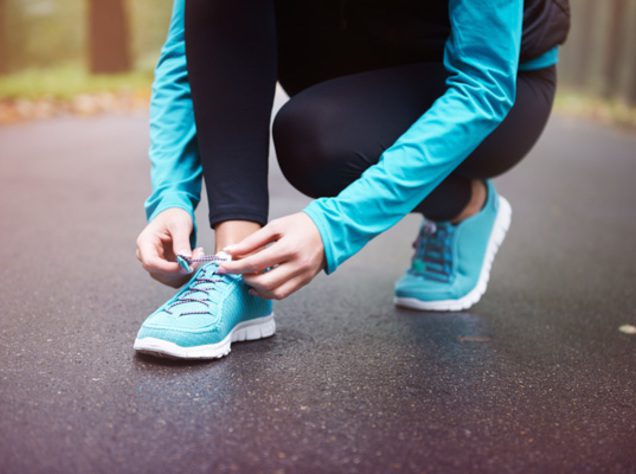Choosing The Right Running Shoe
We as a country have started taking running shoes for granted — you may ask, how so? More often than not, people forget that their feet deserve individual attention and, believe it or not, there is a very specific type of shoe that is right for you. These unbelievably awesome advancements in technology sadly go by the wayside in favor of color and style. Of course, protecting your health and preventing injury should be the most important factors in making your decision.
But, if you’re serious about running and staying fit, learning the differences between Neutral, Natural, and Stability shoes can be the difference between setting a personal record and ending up in the trainer’s room.You need to choose a running shoe that will give you support while absorbing rough impact after impact.
Overview
Understanding the shape of your foot and how it affects your stride is key when deciding what shoe is best for you. In simplest terms, there are three classifications of stride: neutral, pronation, and supination, and each depends on the shape of your foot. If your foot is mostly flat, you’ll have a neutral stride and wear a neutral shoe with a flat sole. If you pronate, that means you receive most of your pressure and impact on your inside-leaning parts of your feet. This, of course, means that supination means that the outside parts of your feet are hitting the ground first and taking the majority of the harsh concrete instead.
Most runners are either flat-footed or pronate, so figuring out which one you are can make a major difference. The general thought process here is that shoes are designed in order to equally spread the impact across your foot. That means, if you pronate and put the pressure on the inside of your feet, that spot of your foot will take a battering — but by adding stability to the shoe, it adds lift to that part of foot in order to ensure it all strikes the ground at the same time. This is why wearing a stability shoe as a flat-footed person will also create uncomfortable situations, as it takes the ideal flat surface and turns it into an unequal situation. At the end of the day, it’s about finding the right category of shoe for your individual needs and then going from there.
Natural
Natural running looks cut away all of the bells, whistles, and extra weight from the feet to provide a simpler running experience. Of course, the majority of these runners are flat-footed and can handle the exercise without a ton of cushioning helping out. In this category, you’ll often find the sub-section of Minimalist. These shoes strip away even more material in hopes of creating a barefoot type feel for runners — but these shoes can be incredibly painful for the wrong runner, so be sure to test them before buying.
Neutral
Cushioned shoes are best for neutral, very mild pronating and supinating striders because the heels act as shock absorbers to neutralize each stride. These shoes, of course, are ideal for those flat-footed runners because they help provide additional stability. These benefits will help cushion your step by step impact, keep your legs straight without bending in at the knees, and lead to an overall smoother experience. Remember, your foot shape should dictate your shoe, not what looks best design-wise or you’ll be looking to return your shoes after one run.
Stability
Consider value addition factors such as the heel counter, the medial post or torsion bar, and the outsole as these all work to counteract your foot shape and provide healthy, safe, and flat running surfaces for your body. The heel counter is what provides stiffness in the heel structure. A strong heel counter provides increased motion stability which is helpful for running with achilles tendonitis or pronation/supination problems. The medial post is the rigid bar that supports the outside of the middle part of the shoe to reinforce the arch. The outsole is the hard rubber on the bottom of your shoe that hits the ground, absorbs shock, and provides support.
(Related: Read about some simple form fixes for beginners here.)
Huddle Up
To reach your full running potential while avoiding injury, be sure to pick the shoe that is best for your feet and stride. From companies like Asics and New Balance to local running specialist stores, their employees should be able to give you an accurate gait analysis, which will tell you if you’re flat-footed or need stability, ultimately pointing you in the right direction. Once you’ve got the perfect fit on your feet, find the perfect fit on the track and consider booking a CoachUp running coach. Together, these two things will undoubtedly help take your running game to another level — happy running!
How useful was this post?
Click on a star to rate it!
Average rating 5 / 5. Vote count: 1
No votes so far! Be the first to rate this post.



